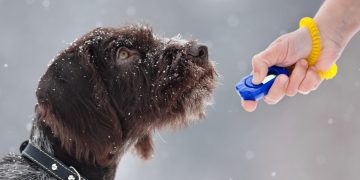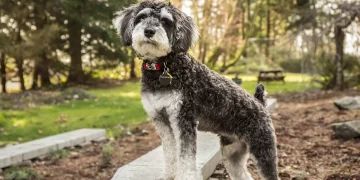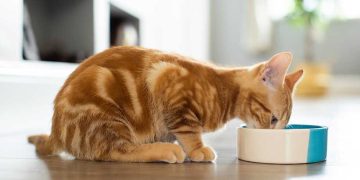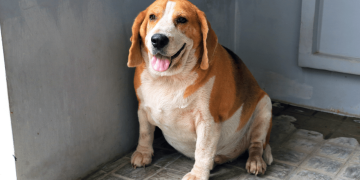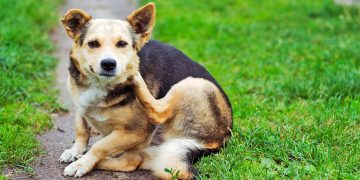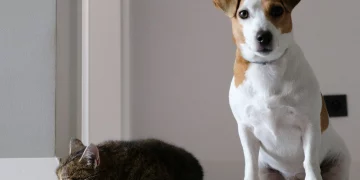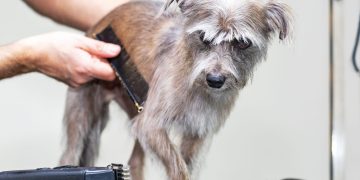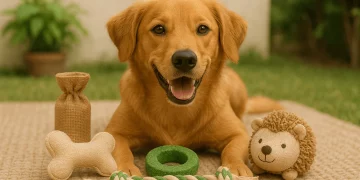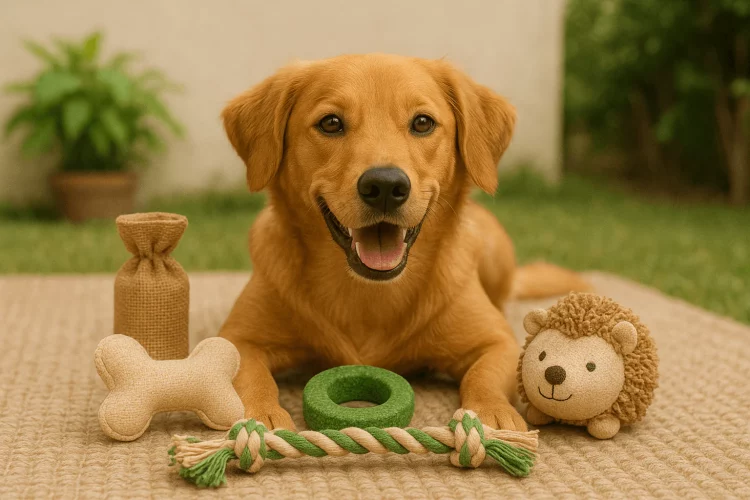Chewing is a natural and common behavior for both dogs and cats, but when this habit is directed at household items, it can quickly become frustrating and costly. Whether it’s your favorite pair of shoes, a couch cushion, or the corners of your furniture, destructive chewing can be a sign of boredom, anxiety, or just a lack of appropriate outlets for your pet’s energy. The good news is that with patience, proper training, and a bit of redirection, you can teach your pet to stop chewing on household items.
In this article, we’ll explore why pets chew, provide effective techniques for redirecting this behavior, and suggest the best chew toys and products that will keep your pet entertained and engaged, while saving your household items from destruction.
Why Do Pets Chew? Understanding the Root Causes
Before you can effectively address your pet’s chewing habits, it’s important to understand why they chew in the first place. Chewing is an instinctual behavior that serves different purposes depending on the species and the individual pet. Here are some common reasons why pets chew:
1. Teething (Puppies and Kittens)
For young animals, chewing is often linked to teething. Just like human babies, puppies and kittens go through a period where their baby teeth fall out and are replaced with adult teeth. This can cause discomfort, leading them to chew on objects to relieve the soreness in their mouths.
Symptoms:
- Chewing on anything they can reach.
- Excessive drooling.
- Swollen or tender gums.
While this is a temporary phase, it can still be frustrating for owners, especially if your pet chews on furniture or household items.
2. Boredom and Lack of Stimulation
Pets, particularly dogs, need regular mental and physical stimulation. Without sufficient exercise, play, or interaction, pets may turn to chewing as a way to pass the time or to release pent-up energy. This is especially true for high-energy breeds or pets left alone for long periods.
Symptoms:
- Destructive chewing when left alone.
- Chewing on non-food items like shoes, furniture, or remote controls.
Chewing helps relieve boredom and anxiety, providing them with an outlet to release energy.
3. Separation Anxiety
Pets, especially dogs, can develop separation anxiety when their owners leave them alone. This anxiety can manifest in various forms, including excessive barking, whining, and chewing. The chewing is often directed at doors, windowsills, or other accessible areas that represent the owner’s absence.
Symptoms:
- Chewing when left alone.
- Pacing or drooling.
- Attempts to escape confinement or destruction of barriers.
4. Stress or Anxiety
In addition to separation anxiety, pets may chew due to general stress or anxiety. Changes in routine, moving to a new environment, or even household disruptions like new family members or a change in the pet’s daily schedule can trigger stress.
Symptoms:
- Destructive chewing during stressful situations.
- Increased licking or panting.
Pets use chewing as a coping mechanism, attempting to relieve their anxiety through this repetitive action.
5. Exploration and Natural Instinct
Pets, particularly puppies and kittens, chew simply because they are curious about their environment. Their mouths are primary tools for exploration. Dogs, for example, are highly motivated by scents and textures, and they explore their world by chewing on things they find interesting.
Symptoms:
- Chewing on random household items like shoes, socks, or remote controls.
This type of chewing behavior is natural but can become problematic if it isn’t redirected appropriately.
Training Techniques to Discourage Destructive Chewing
While chewing is a natural behavior, it’s important to teach your pet which items are acceptable to chew and which ones are off-limits. Below are some training techniques to help curb destructive chewing:
1. Provide Proper Chew Toys
One of the most effective ways to stop your pet from chewing on household items is to provide them with appropriate chew toys. Chew toys are designed to satisfy your pet’s need to chew while keeping them entertained and away from your furniture.
How to Implement:
- Choose durable, safe toys: Look for chew toys made from non-toxic, durable materials that won’t break into dangerous pieces.
- Variety is key: Pets can become bored with the same toy, so rotate toys regularly to keep them interested.
- Size and texture: Ensure the chew toys are the right size for your pet’s mouth and appropriate for their chewing strength. For example, puppies may benefit from softer toys, while adult dogs may need tougher rubber or nylon toys.
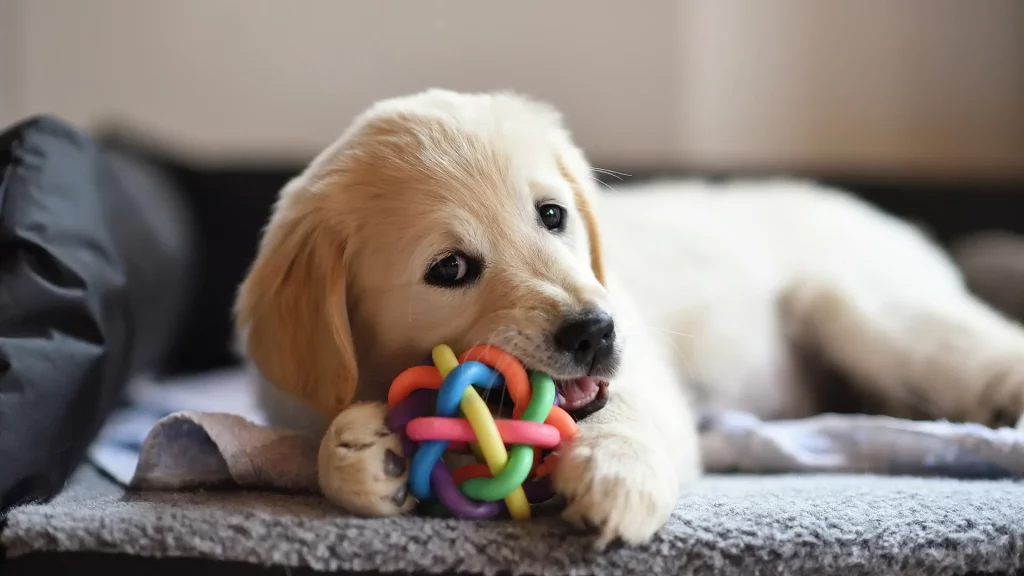
2. Use Positive Reinforcement
Reward your pet for chewing on their toys and not household items. Positive reinforcement helps pets understand what is expected of them. Every time your pet chews on their toy, offer praise, treats, or affection.
How to Implement:
- When your pet chews on their chew toy, immediately reward them with a treat or verbal praise.
- If you catch your pet chewing on something they shouldn’t, redirect them to the toy and reward them when they start chewing on the appropriate item.
Consistency is key. This method can take time, but positive reinforcement works effectively for most pets.
3. Redirection and Distraction
If you catch your pet in the act of chewing on an inappropriate item, use redirection techniques to shift their attention to something more appropriate. Instead of scolding them, offer a toy, bone, or other acceptable item to chew on.
How to Implement:
- Keep a chew toy nearby at all times so you can quickly redirect your pet’s attention when they start chewing on something they shouldn’t.
- Use a firm “no” or “leave it” command before offering the proper toy. Once they begin chewing on the toy, reward them with praise or treats.
4. Create a Safe Space
If your pet is constantly chewing on furniture or household items when left unsupervised, create a safe, controlled space for them when you are not around. This could include confining them to a crate or pet-proofing a room to keep them away from potential chewed-up items.
How to Implement:
- Crate training can be a helpful way to prevent chewing when you’re not home. Make the crate a positive space by adding comfortable bedding, toys, and treats.
- If using a room, ensure all valuable or destructive items are removed.
5. Use Deterrent Sprays
There are sprays available that can deter pets from chewing on household items. These sprays have an unpleasant taste or smell, which discourages chewing. They are particularly effective for pets that are persistent in chewing on furniture or electrical cords.
How to Implement:
- Apply a pet-safe deterrent spray to the areas your pet tends to chew (such as furniture legs or baseboards).
- Make sure the spray is safe and non-toxic, as some can be harmful to pets if ingested.
6. Provide Proper Exercise and Mental Stimulation
Sometimes, chewing is a result of excess energy or boredom. Ensure your pet is getting enough physical exercise and mental stimulation through regular walks, playtime, and training sessions.
How to Implement:
- For dogs, aim for at least one walk per day, depending on their breed and energy level. Active breeds may require additional playtime or exercise.
- Puzzle toys and treat-dispensing toys are also great for mental stimulation and can keep your pet occupied.
Best Chew Toys and Products to Keep Pets Entertained
Finding the right chew toys for your pet is essential in preventing destructive chewing. Here are some of the best chew toys available in 2024 for both dogs and cats:
1. KONG Classic Dog Toy
The KONG Classic is a well-known and highly recommended toy for dogs. It’s made from durable rubber and can be stuffed with treats or peanut butter to keep your dog entertained for hours. The unpredictable bounce of the KONG also encourages active play, reducing boredom.
2. Nylabone Durable Chew Toys
Nylabone offers a range of chew toys specifically designed for dogs with powerful jaws. These toys are available in various flavors and sizes, making them perfect for dogs that need to chew frequently. They also help keep your dog’s teeth clean.
3. Benebone Bacon-Flavored Chew Toy
Benebone’s bacon-flavored chew toys are a favorite for many dogs. Made from nylon and infused with bacon flavor, these toys are long-lasting and satisfying for dogs that love to chew. Their ergonomic design makes them easy for dogs to hold and chew.
4. PetSafe Busy Buddy Tug-A-Jug
This toy is perfect for dogs who need both physical and mental stimulation. It dispenses treats while your pet plays, keeping them engaged and entertained. It’s a great option to redirect your dog’s attention from chewing on household items.
5. Catit Senses 2.0 Digger for Cats
For cats, the Catit Senses 2.0 Digger is a great option to encourage natural hunting and chewing behavior. It’s designed to help cats engage their paws and mouths, making it an excellent toy for chewing and play.
6. Yeowww! Catnip Banana
This catnip-infused chew toy is perfect for cats that like to nibble and chew. The strong, durable fabric ensures that it lasts, while the organic catnip inside will keep your cat entertained.
Conclusion
Chewing is a natural behavior, but when it becomes destructive, it can create challenges for both pets and owners. By understanding why pets chew and using the right training techniques, toys, and products, you can redirect your pet’s chewing habits and save your household items from destruction. With patience and consistency, your pet can learn what is appropriate to chew and what isn’t, resulting in a happier, healthier pet and a more harmonious home environment.





